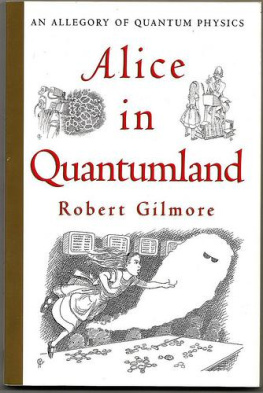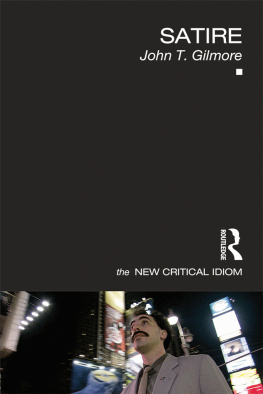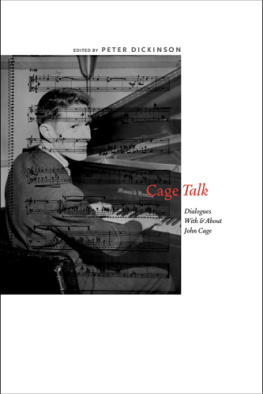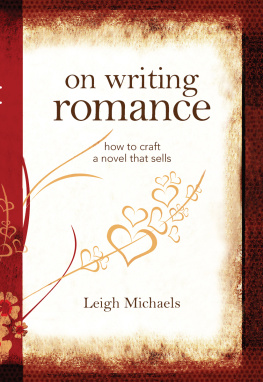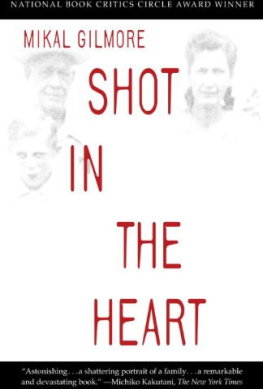Leigh Gilmore - Witnessing Girlhood: Toward an Intersectional Tradition of Life Writing
Here you can read online Leigh Gilmore - Witnessing Girlhood: Toward an Intersectional Tradition of Life Writing full text of the book (entire story) in english for free. Download pdf and epub, get meaning, cover and reviews about this ebook. year: 2019, publisher: Fordham University Press, genre: Politics. Description of the work, (preface) as well as reviews are available. Best literature library LitArk.com created for fans of good reading and offers a wide selection of genres:
Romance novel
Science fiction
Adventure
Detective
Science
History
Home and family
Prose
Art
Politics
Computer
Non-fiction
Religion
Business
Children
Humor
Choose a favorite category and find really read worthwhile books. Enjoy immersion in the world of imagination, feel the emotions of the characters or learn something new for yourself, make an fascinating discovery.

- Book:Witnessing Girlhood: Toward an Intersectional Tradition of Life Writing
- Author:
- Publisher:Fordham University Press
- Genre:
- Year:2019
- Rating:3 / 5
- Favourites:Add to favourites
- Your mark:
- 60
- 1
- 2
- 3
- 4
- 5
Witnessing Girlhood: Toward an Intersectional Tradition of Life Writing: summary, description and annotation
We offer to read an annotation, description, summary or preface (depends on what the author of the book "Witnessing Girlhood: Toward an Intersectional Tradition of Life Writing" wrote himself). If you haven't found the necessary information about the book — write in the comments, we will try to find it.
Witnessing Girlhood: Toward an Intersectional Tradition of Life Writing — read online for free the complete book (whole text) full work
Below is the text of the book, divided by pages. System saving the place of the last page read, allows you to conveniently read the book "Witnessing Girlhood: Toward an Intersectional Tradition of Life Writing" online for free, without having to search again every time where you left off. Put a bookmark, and you can go to the page where you finished reading at any time.
Font size:
Interval:
Bookmark:
WITNESSING GIRLHOOD
Witnessing Girlhood
TOWARD AN INTERSECTIONAL TRADITION OF LIFE WRITING
LEIGH GILMORE AND ELIZABETH MARSHALL
FORDHAM UNIVERSITY PRESS
New York 2019
Copyright 2019 Fordham University Press
All rights reserved. No part of this publication may be reproduced, stored in a retrieval system, or transmitted in any form or by any meanselectronic, mechanical, photocopy, recording, or any otherexcept for brief quotations in printed reviews, without the prior permission of the publisher.
Fordham University Press has no responsibility for the persistence or accuracy of URLs for external or third-party Internet websites referred to in this publication and does not guarantee that any content on such websites is, or will remain, accurate or appropriate.
Fordham University Press also publishes its books in a variety of electronic formats. Some content that appears in print may not be available in electronic books.
Visit us online at www.fordhampress.com.
Library of Congress Cataloging-in-Publication Data
available online at https://catalog.loc.gov.
Printed in the United States of America
21 20 19 5 4 3 2 1
First edition
for
Maisie Kathryn Meneer
William Gilmore Pounds
Finn Gilmore Pounds
CONTENTS
WITNESSING GIRLHOOD
So, I ask, how much is a little girl worth?
RACHAEL DENHOLLANDER, victim impact statement, Larry Nassar sentencingJanuary 24, 2018
Rachael Denhollanderadministration and athletics. Her public testimony magnetized hundreds of previously isolated young athletes to assemble as a collective witness. In so doing, they exposed how practices of discrediting girls and young women coincide with a narrative of protecting, even caring for, children that shielded a sexual predator from exposure and prosecution.
Rachael Denhollanders victim impact statement was the last word before Nassar was sentenced to 40175 years for seven counts of first-degree sexual misconduct, to which he pled guilty. Denhollanders testimony changed the context in which Nassars abuse could be witnessed by centering the victims as truth-tellers and stripping Nassar of authority and institutional cover. A new forum of judgment emerged from this shift as Judge Rosemarie Aquilina allowed over 150 women and members of their families to offer accounts of how Nassar abused his role as respected physician to sexually assault young female athletes who came to him for treatment. The entire course of Denhollanders public testimony unfolded in jurisdictions ranging from newspapers and online media to legal courts. She represented an emblem of courage and a source of strength for other victims. She enabled others to come forward and share their stories not only because they, too, had been victimized by Nassar, but because she had succeeded in accessing a space of justice, a space that had been denied the numerous young women who had previously sought to report Nassar. Their numbers became clear as the victim impact statements were delivered over seven days. What changed from the routine dismissal and successful cover-up and enablement of Nassar by numerous authorities? How did Denhollanders testimony dislodge the silencing and shaming of those who report sexual abuse and catalyze in its place a collective forum of witness? What conditions are required for women who experienced abuse in their girlhoods to tell their stories and have those stories witnessed? When those conditions are prevented from assembling, when justice from authorities and institutions is denied, and when the impossibility and necessity of bearing witness coincide, how do women use the figure of the child in life writing, or other allied testimonial performances, to seek justice?
The testimony of the 156 women represents a visible, contemporary enactment of a long tradition we trace in this book. In it, adult women return to the experience of their own girlhoods to offer fine-grained and strategically shaped accounts of childhood that allow new audiences to under stand their vulnerability and suffering, but also the role that authorities played in enabling violence, replacing the rationalizations offered by those inflicting abuse with their own interpretation of harm. Emerging within these accounts are key scenes and figures that link a range of texts and forms from the mid-nineteenth century to the contemporary period. Chief among these are self-representations of the child witness as offered by the adult author in autobiographical representations of childhood to address diverse audiences, and the centrality of the authors analysis of injury and justice. New testimonial performances, as diverse as the collective witness in the Nassar case or the use of the child witness in comics and picture books, reveal and refer to significant aspects of earlier self-representational acts. In Witnessing Girlhood we trace reverberations across timelines, self-representational acts, and jurisdictions of the child witness in life writing.
In the aftermath of their testimony in court, several of the gymnasts continued to tell their stories as part of a range of actions. Some are pursuing legal action against those who enabled Nassar at Michigan State and USA Gymnastics, as well as in a range of local jurisdictions where the girls and young womens claims were dismissed without adequate investigation or met with hostility and shaming. In so doing, Raisman visualized the temporalities of witness we trace here. She returned to the scene of childhood trauma with a difference: Her adult self provided the language denied to her younger self and, in a sense, accompanied the child witness, doubling back to seek justice, amplifying her own voice, and standing in the place of the victim as a survivor.
Accompaniment enacts the survivor positionality theorized by Sharon Marcus in Fighting Bodies, Fighting Words of a self that could differ from itself over time. They also embodied it as a collective witness.
Child Witness, Testimony, Life Writing
From Harriet Jacobss slave narrative Incidents in the Life of a Slave Girl to contemporary comics such as Phoebe Gloeckners A Childs Life and Other Stories or picture book memoirs such as Junko Morimotos My Hiroshima, authors return to, rework, and repicture childhood trauma. These examples of life writing present the child as a testimonial figure and childhood trauma as a central site through which authors seek to represent violence and elicit ethical witness from diverse publics. The child witness documents the authors early life in ways that invite readers to understand violence and survival as a complex and profound problem with which they ought to grapple. These are not stories that merely recall scenes from girlhood or relegate childhood experience and memory to the past as if they stood outside history. Instead, autobiographical narratives of childhood by adults mark a site where the values associated with autobiographytruth telling, the authority of experience, and credibilityattach to the child and permit adult readers to ratify authors demands for justice.
Despite the myth that the vulnerability of children can reliably generate the forms of protection children need, child witnesses cannot magically compel readers to care about them. They can, however, amplify the implicitly affiliative affects of life writing through which authors and audiences forge connection. They can also expose how such connection fails to emerge or is supplanted by the aversive affects of bias, distrust, ignorance, aversion, disinterest, and voyeurism that attend the representation of trauma. Witness texts hope to stir empathy in audiences, but they do not assume that readers are aligned with their purposes, politics, or theories of history, whether that is the history of a nation, a revolution, an institution, or a crime.
Next pageFont size:
Interval:
Bookmark:
Similar books «Witnessing Girlhood: Toward an Intersectional Tradition of Life Writing»
Look at similar books to Witnessing Girlhood: Toward an Intersectional Tradition of Life Writing. We have selected literature similar in name and meaning in the hope of providing readers with more options to find new, interesting, not yet read works.
Discussion, reviews of the book Witnessing Girlhood: Toward an Intersectional Tradition of Life Writing and just readers' own opinions. Leave your comments, write what you think about the work, its meaning or the main characters. Specify what exactly you liked and what you didn't like, and why you think so.



